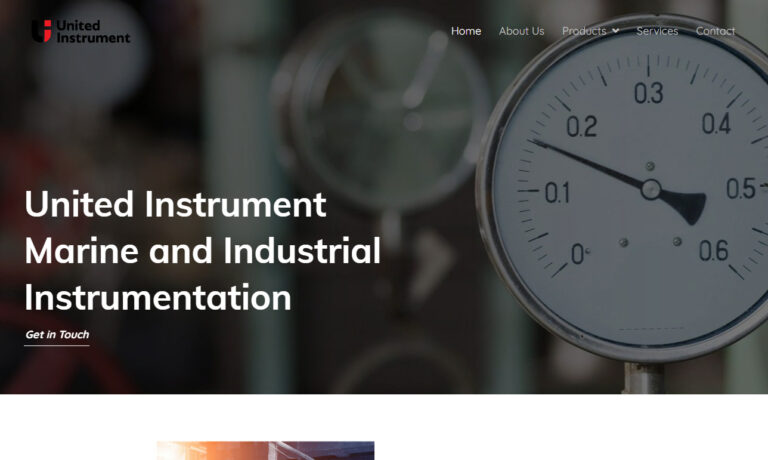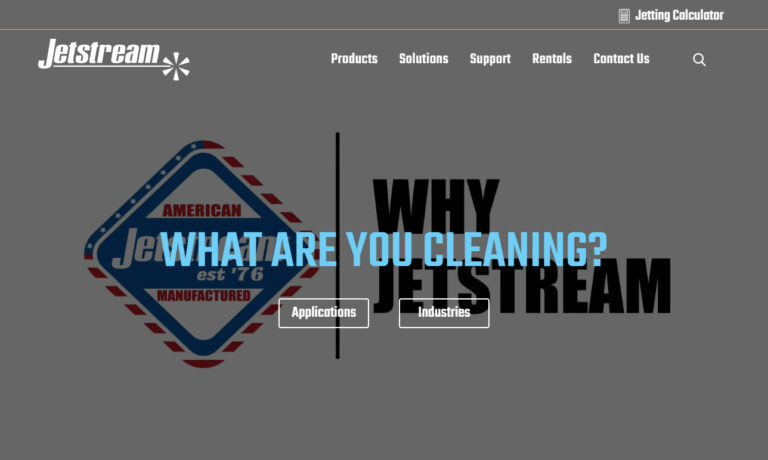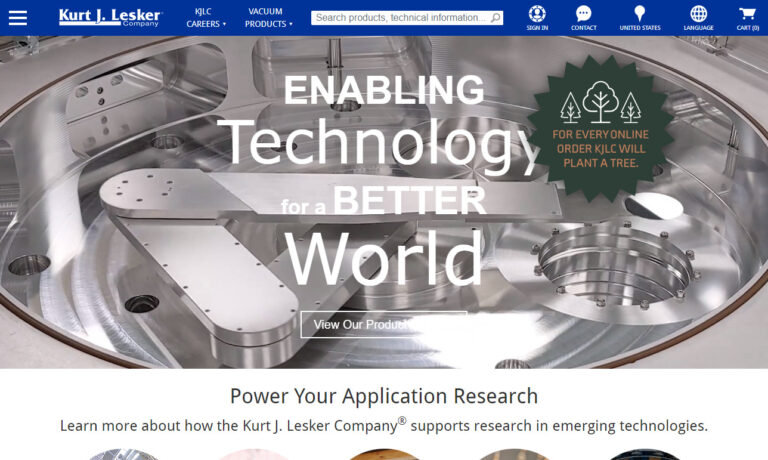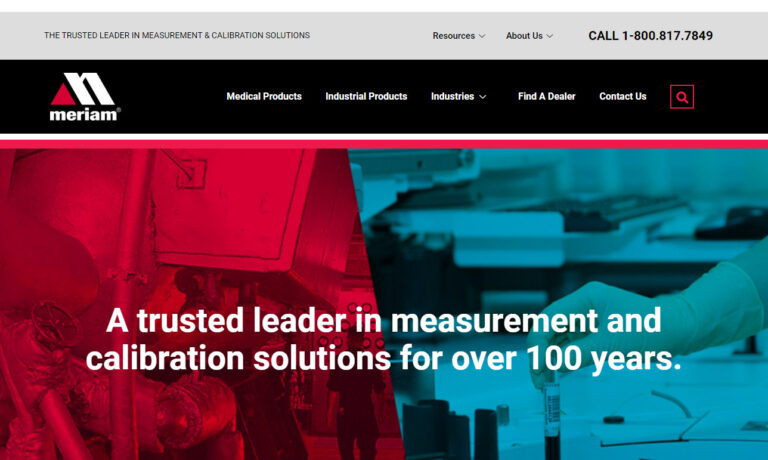Vacuum gauges gauge and show sub-atmospheric or vacuum pressures inside a system or vessel. Low-pressure gauges typically measure pressures between 10 and 15 psi, while high-pressure gauges may accurately read pressures up to 10,000 psi. Internal pressure develops when gasses and liquids are housed in closed vessels or sealed systems. Read More…
Since 1932, United Instrument Company has provided digital pressure gauges to the marine and industrial industries. In addition to our own gauges we also supply customers with Weksler, Ametek, Wika, Weiss, Ashcroft and Fluke products. We pride ourselves in our excellent and successful employee-to-customer relationships. Become one of our new customers today.

Jetstream of Houston, LLP., a division of Federal Signal Corporation (NY:FSS), manufactures industrial high-pressure waterblasting equipment utilized up to pressures of 40,000 psi. The company offers a complete line of Skid and Trailer Mounted Pump units, Control Guns, Valves, Hoses, Replacement Parts and Nozzles - in stock and ready to ship when you need them.

Kurt J. Lesker Company is a worldwide manufacturer and distributor of vacuum products and services. We have over 14,000 high quality products including complete systems, vacuum chambers, process equipment, filters, valves, gauges, deposition sources and other system components. Besides our comprehensive catalog and sales coverage, we also provide technical consulting and field service.

Meriam offers a wide variety of mechanical and digital pressure gauges for process measurement and indication. Terrific accuracy specifications and little-to-no temperature effect set these instruments apart from the competition. Many of our digital gauge products have multiple output options to increase their versatility in today’s changing control schemes.

More Vacuum Gauge Manufacturers

Vacuum Gauge Design
A vacuum is defined as an enclosure having an atmospheric pressure of less than 14.7 psi. Zero pressure cannot be artificially created, and neither space nor nature contains any instances of an absolute vacuum. However, a container's contents can be partially evacuated. The amount of enclosure evacuation is measured using vacuum gauges, which measure low pressure rather than negative pressure.
Metals like stainless steel or aluminum are used to construct vacuum gauges. Some are digital meters, while others provide analog feedback through a dial. A gauge's characteristics include the display type, scale, vacuum range, working temperature, accuracy, and scale units. While differential pressure gauges take and compare two pressure measurements, dual-scale devices deliver the pressure reading in two sets of units.
In addition, some vacuum gauges have temperature compensation functions to correct potential mistakes brought on by temperature fluctuations. In industrial, manufacturing, and scientific applications, these tools are crucial. For some procedures, vacuums are widely employed to produce frigid temperatures; gauges are necessary for the operator to be aware of the internal pressure, which could be risky and ineffective.
Vacuum Gauge Types
There are several types of vacuum gauges available to obtain pressure readings. We examine these vacuum gauges below.
Manometers
A manometer, a U-shaped tube partially filled with a liquid like water, mercury, or oil, is one way to do this. The water column on each side of the U rises or falls in response to a change in pressure, which is noticed by a sensor and displayed on the dial or screen.

Thermocouples
Thermocouples adapt an alternative strategy. They track variations in a gas's thermal conductivity inside a tube. Heating a filament encourages mobility. The gas molecules interact with the electrons as they travel from the source (the cathode) to the drain (the anode), creating positive ions. A current is created as a result, and it is measured. The components of comparable gauges can also be kept cool, allowing them to resist brief or prolonged exposure to high-pressure gasses.
Vehicle (Manifold) Vacuum Gauges
Because manifold vacuums pull air into the engine to power the vehicle, these vacuum gauges are also employed in automobiles. This vacuum controls the fuel-to-air ratio to ensure the engine operates at its best. In addition, automotive vacuum gauges aid in locating air leaks, which cause a rough idle, poor fuel efficiency, and increased emissions. These instruments are fastened to a plug on the engine's intake manifold.
Mechanical Gauges
These gauges use mechanically changing tubes or diaphragms to measure vacuum pressure. Typically, the type of gas does not impact the readings of mechanical pressure gauges.
Bourdon Gauges
These gauges' distinctive feature is a tube bent into a circular arc with one end connected to the vacuum system. During the evacuation process, the end tube bends due to external atmospheric pressure. The pointer attachment moves when the end tube bends, allowing the technician to note the pressure levels on the linear scale. Most bourdon gauges can measure pressures between 0 bar, or atmospheric pressure, and ten millibar.
Capacitance Gauges
The crucial element of these gauges is their pressure-sensitive diaphragm, formed of reinforced ceramics. The back of the diaphragm is fixed with an electrode connection and a plate capacitor. The capacitance fluctuates depending on whether the two capacitor plates move apart or together. As a result, the pressure variation often varies directly to the shift in the distance between the plates. The gauge converts this pressure change into an electronic signal that the technician can use to detect pressure levels precisely. Pressure readings considerably above 0 bar and as high as 10 bar can be picked up using capacitance gauges.
Diaphragm Pressure Gauges
This gauge's standout feature is the diaphragm separating the sealed and evacuated vacuum compartment from the pressure. The diaphragm flexes while the evacuation progresses because there is less variation between the pressure in the vacuum chamber and the pressure to be measured. A mechanical lever, electrical bending bar, strain gauge, or other electrical device is then used to transmit the amount of diaphragm flexing to a pointer scale. Diaphragm gauges are capable of measuring pressures as high as 1500 bars.
Capsule Gauges
Like their diaphragm-based counterparts, these gauges detect a sealed, evacuated, thin-walled capsule inside the measuring device. When the vacuum pressure drops, the capsule expands. The engineer can read the pressure level from the linear scale by relaying the movement of the capsule to a pointer scale using a network of levers.
Ionization Gauges
Ionization gauges can be divided into two categories: hot cathode gauges and cold cathode gauges. Cold cathode gauges create ionization by trapping a circulating electron plasma stream in its magnetic and crossed electric fields. Hot cathode gauges generate electrons and ionize the gas and pressure the technician wants to measure. Engineers can determine the gas pressure by monitoring the electric current flow between the anodes and the glass bulb inside the cathode. However, compared to cold cathode gauges, hot cathode gauges with large temperature changes are more prone to mistakes.
Applications of Vacuum Pressure Gauges
Aside from the oil and gas industry, other industries that primarily rely on vacuum technology include the pharmaceutical, paper, and offshore drilling industries. Vacuum pressure gauges are used in chemical and petroleum refineries to move gas and liquid components through their systems. Site personnel rely on pressure instruments to clean up work areas of contaminants.

Choosing the Proper Vacuum Gauges Manufacturer
To make sure you have the most productive outcome when purchasing Vacuum Gauges from a Vacuum Gauges Supplier, it is important to compare at least 4 Companies using our list of Vacuum Gauges companies. Each Vacuum Gauges Supplier has a business profile page that highlights their areas of experience and capabilities and a contact form to directly communicate with the manufacturer for more information or request a quote. Review each Vacuum Gauges business website using our patented website previewer to get an idea of what each business specializes in, and then use our simple RFQ form to contact multiple Vacuum Gauges companies with the same message.










 Flow Meters
Flow Meters Leak Detectors
Leak Detectors Level Switches
Level Switches Pressure Gauges
Pressure Gauges Pressure Switches
Pressure Switches Pressure Transducers
Pressure Transducers Castings & Forgings
Castings & Forgings Bulk Material Handling
Bulk Material Handling Electrical & Electronic Components
Electrical & Electronic Components Flow Instrumentation
Flow Instrumentation Hardware
Hardware Material Handling Equipment
Material Handling Equipment Metal Cutting Services
Metal Cutting Services Metal Forming Services
Metal Forming Services Metal Suppliers
Metal Suppliers Motion Control Products
Motion Control Products Plant & Facility Equipment
Plant & Facility Equipment Plant & Facility Supplies
Plant & Facility Supplies Plastic Molding Processes
Plastic Molding Processes Pumps & Valves
Pumps & Valves Recycling Equipment
Recycling Equipment Rubber Products & Services
Rubber Products & Services